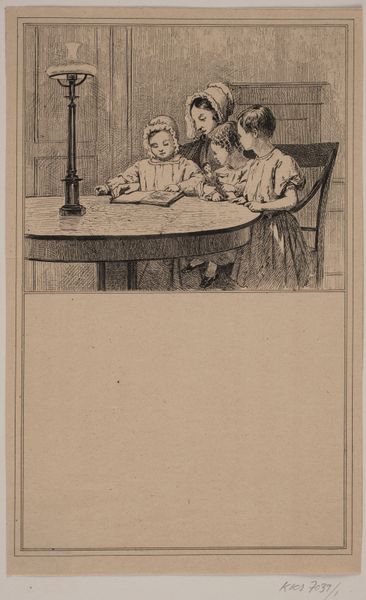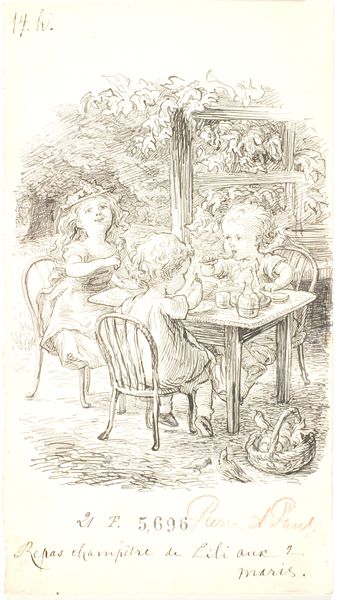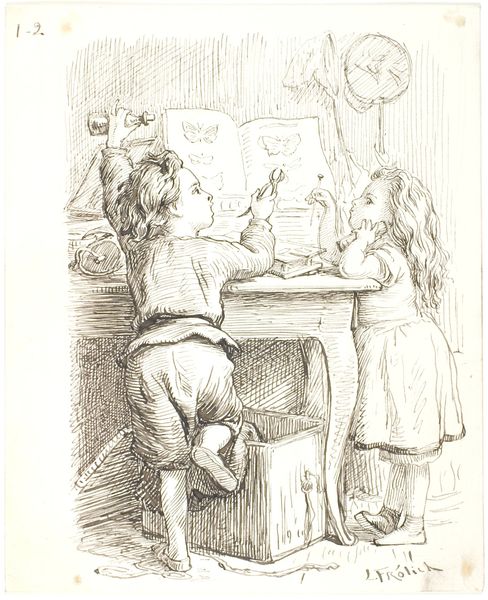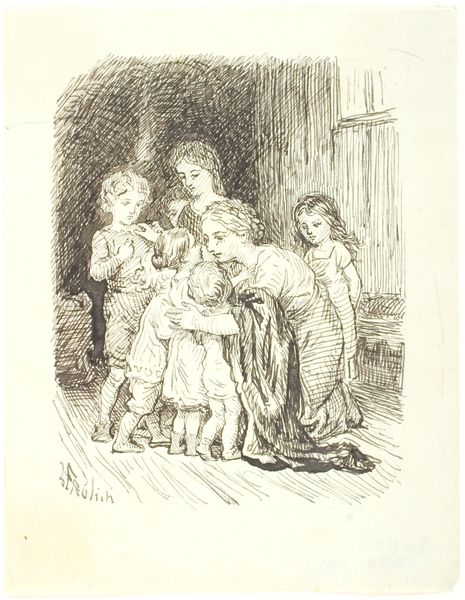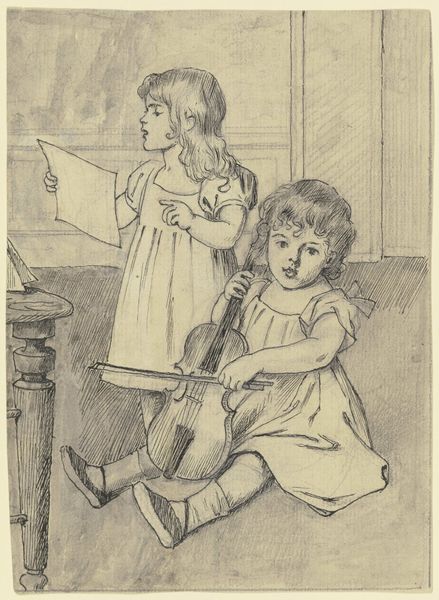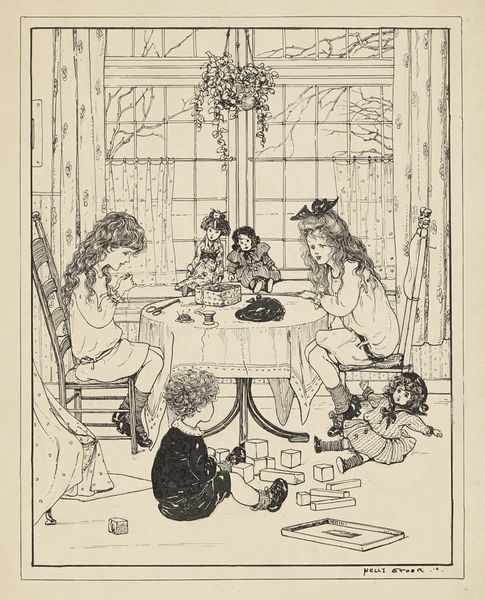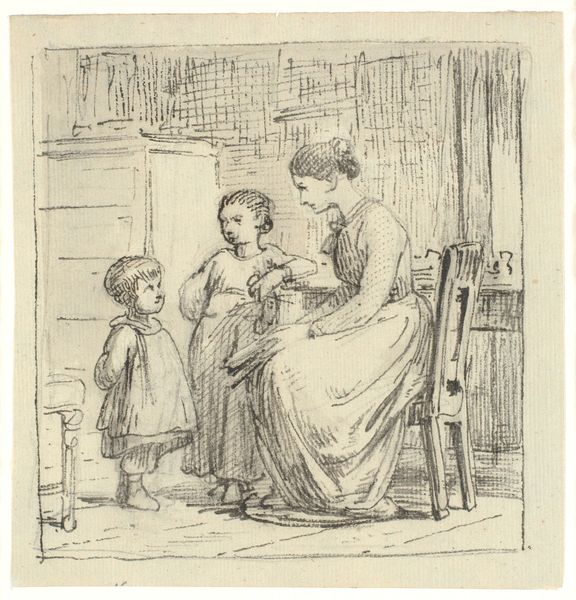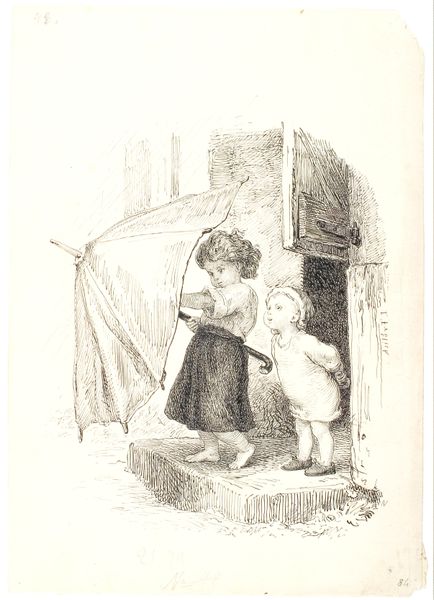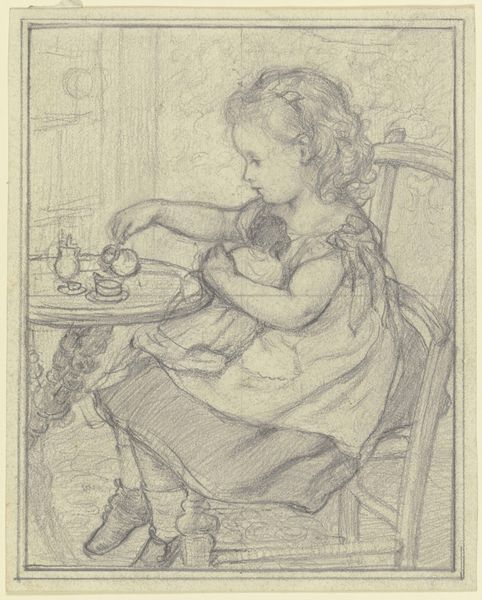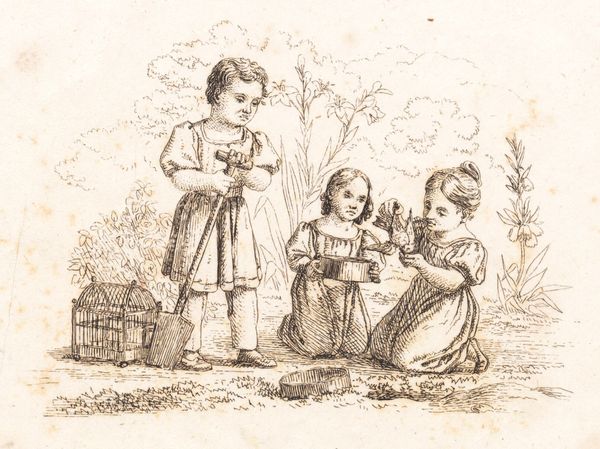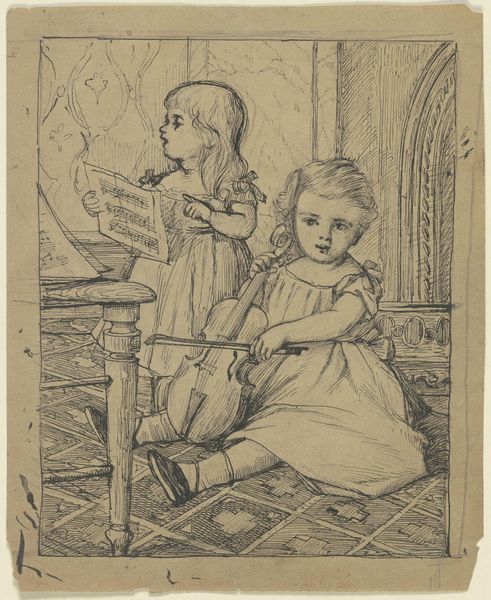
drawing
#
portrait
#
drawing
#
narrative-art
#
figuration
#
romanticism
#
genre-painting
Dimensions: 97 mm (height) x 120 mm (width) (bladmaal)
Curator: This drawing by Martinus Rørbye, made around 1845, is called "A Mother Showing Three Children a Book." It's currently housed here at the SMK, Statens Museum for Kunst. Editor: My first thought? Warmth. Even though it’s just brown ink on paper, there's an intimate feeling, like a snapshot of domestic life lit by the lamp there on the table. Curator: Rørbye was a leading figure in the Danish Golden Age, and this piece reflects the Romantic movement's interest in everyday life. Think about the rising middle class and the increased emphasis on family and education. This image reinforces those emerging values. Editor: I'm curious about the process, you know? The etching work is remarkably dense. Look at the lines creating shadow and texture—especially on the table. I bet it would be a delicate and labor-intensive undertaking to craft such tonal complexity. Curator: Absolutely. The detail suggests a deliberate artistic choice to ennoble the domestic sphere. What do you think that book the children are looking at might be? A religious text, perhaps, furthering their moral instruction? Or even stories and poems, creating a culturally literate new generation. Editor: Hmm, perhaps, or just general information and reading skills, like a tool. Notice, however, the clothes. Presumably they were all hand-made, bespoke objects; similarly with the lamp or the wooden chair. The artwork is almost like a catalogue or record of various craft processes! Curator: Fascinating, I never looked at it that way, in those granular production terms, but indeed these elements also signal wealth, status, and the benefits of education being provided to these children. Editor: Thinking of all that work makes me wonder what role art can play in drawing our attention back to the material processes we take for granted daily. Curator: I’d agree and from my perspective, looking at the narrative depicted helps highlight the cultural values promoted during this specific era. Thank you! Editor: Thank you.
Comments
No comments
Be the first to comment and join the conversation on the ultimate creative platform.
